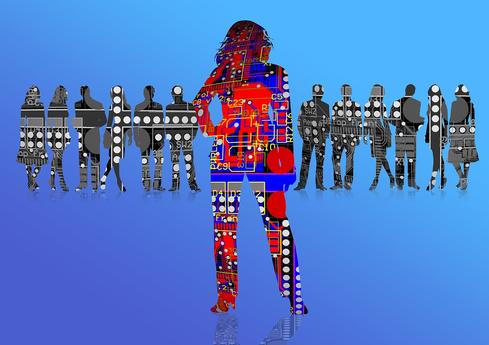IoT: Can It Bridge The Digital Divide To Fulfill Its Promise?
The Internet of Things could be key in helping with problems with infrastructure, transportation, pollution, and general quality of life. But, first, access is needed.


10 IT Infrastructure Skills You Should Master
10 IT Infrastructure Skills You Should Master (Click image for larger view and slideshow.)
One of the most interesting presentations during the IoT Solutions World Congress in Barcelona last month was about the impact of the digital divide on the growing urban population, and how IoT could be a game-changer in helping people and governments bridge those differences in access to technology.
Sath Rao, global VP of convergence growth innovation at Frost & Sullivan, gave a comprehensive overview of current internet penetration, the challenges of demographics and urban growth, and the issues of sustainability associated with those challenges.
In 2014, 54% of the world population lived in cities, mostly in developed countries. That number is projected to grow to 67% by 2030, with African nations making the biggest shift, Rao said, citing figures from the WTO and the UN, and analysis by Frost & Sullivan.
That migration to cities has already created immense problems with infrastructure, transportation, pollution, and general quality of life. We all have seen pictures and videos of pollution and overcrowding in Chinese cities, for example, and big-city slums in countries such as India and Brazil.
Internet access and digital skills are key to unlocking the potential of the IoT, which can help with those challenges. Applications such as telecommuting, virtual meetings, app-based public transport, smart cars, smart logistics, smart buildings, and smart appliances can help curb emissions and provide more sustainable urban growth.
"As of 2014, 60 percent of the global population did not have access to internet, and 56 percent out of this 60 percent belonged to emerging countries," according to the Frost & Sullivan website. "Given the benefits that developed economies derive from proliferation of internet, bridging this digital divide is a pressing global challenge necessitating enhanced public-private collaboration."
In some countries, access to the Internet is extremely problematic because the population is largely rural. Rao pointed to Sri Lanka as an example of a society where over 80% of the population lives in rural areas, a rate that has not been reduced in the past 40 years.
Deploying the infrastructure necessary to bridge the digital divide using traditional wired technologies, such as digital phone lines or fiber, is economically impossible. That's why initiatives such as Google's Project Loon, which the company describes as "balloon-powered internet for everyone," could help populations get online access even in the remotest location. Google is already working with the Sri Lankan government to make this happen.
"The entire Sri Lankan island -- every village from (southern) Dondra to (northern) Point Pedro -- will be covered with affordable high speed internet using Google Loon's balloon technology," said Mangala Samaraweera, the Sri Lankan Foreign Minister and Minister of IT, AFP reported.
[Will IoT be everywhere? GE CEO: IoT Boosts Safety, Efficiency, Speed.]
European countries and the US are facing different challenges, especially related to aging populations. In Europe, the issue is not lack of IT infrastructure or communications, but how to make sure that the infrastructure is constantly improved in order to provide the necessary resources for new applications. Those include new advances in telemedicine, which is critical for managing chronic diseases; transportation, such as self-driving vehicles; and the growing number of connected devices, which will require much faster Internet connections and wireless infrastructure.
Some countries are already moving toward fully embracing the internet to manage their inner workings. Rao gave the example of Estonia, a Baltic country that was part of the Soviet Union until 1991 and is now a member of the EU.
After getting back its independence, Estonia launched an aggressive program of modernization focusing on digital technologies. As a result, mobile phone penetration has increased from 4.92% in 1996 to 164% in 2014. Online banking jumped from zero in 1996 to 97% of financial transactions last year. The Estonians enjoy a streamlined public administration, and most of the services can be requested electronically using the country's secured ID cards. The central government, banking on digital technologies, has been able to reduce the duration of cabinet meetings to 60 minutes from ones that lasted four to 10 hours.
Rao concluded by talking about an "ikebana" (the Japanese art of flower arrangement) approach to bridging the digital divide, where a mixture of different types of technologies, such as low-orbit satellites, Google's balloons, LTE, DSL and fiber, will be used to bring the benefits of the internet and the IoT to all corners of the world.
"If we change the notion of our battleground, and we realize that we should be targeting all those global challenges -- that of demographic shift, of education, of political will -- clearly knowledge, innovation. and collaboration will likely increase," he said. "And if we make wise choices, decent prosperity for all is a very possible long-term goal."
About the Author
You May Also Like






